NHL Uniforms Old and New

NHL Uniforms Old and New

In the beginning, players wore humble wool sweaters. As the NHL's 91st season dawns, all 30 teams are clad in new streamlined uniforms made of four lighter ventilated fabrics that keep players cooler and drier while enhancing their speed and freedom of motion. Some have updated color schemes and new crests, although the Chicago Blackhawks will remain true to their familiar look.

The Original Six years (1942-67) saw the evolution of sweaters with a drawstring neck, the most famous being those of the storied Montreal Canadiens. In the early '60s, wool was mercifully replaced by more comfortable synthetic fabrics, which still absorbed sweat and melted ice. Goaltenders will surely appreciate feeling less soggy this season.

Best known for their black and gold scheme of the Mario Lemieux years, the Penguins wore blue for their first 12 seasons after the NHL expanded in 1967-68. Their new uniform bears their 21st century black and white with the original skating penguin crest that was dropped during much of the `90s.

The first expansion era of the '60s and '70s brought unusual sights, such as the California/Oakland Golden Seals and Los Angeles Kings, who wore all-yellow home jerseys instead of the traditional base white. The early '70s also saw the introduction of players' names onto the backs of sweaters.

The Canucks wore the most unforgettable sweater of the late '70s and early '80s. Their new uniform reflects their original colors and logo (on the shoulders) with the crest they adopted in 1997. Other teams, such as the Dallas Stars and Nashville Predators, also have their city name spelled out across the chest this season.
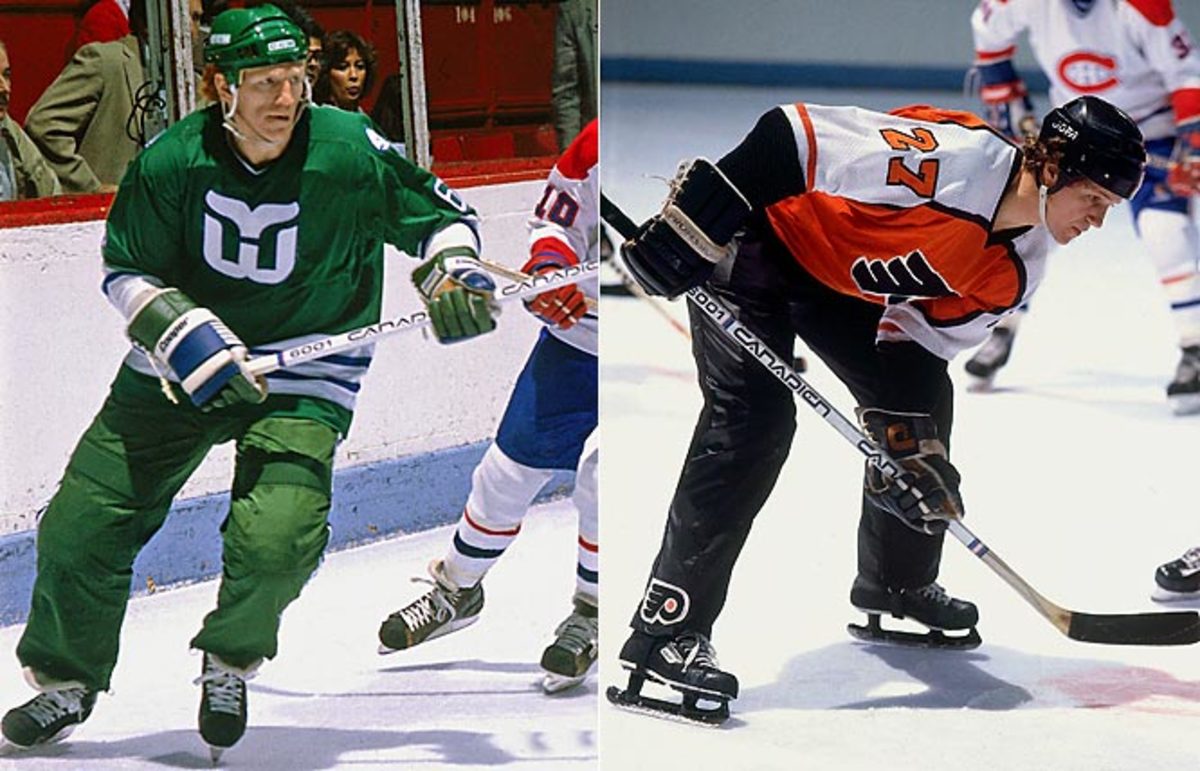
One of the NHL's bolder, and weirder, experiments began in 1981. Only the Hartford Whalers and Philadelphia Flyers wore the pants, which were gone after two seasons because players found them too slick, making them prone to skidding long and hard into the boards.

By the mid-'90s the expanding NHL was moving south, and with that change went fondly-remembered teams such as former WHA members the Quebec Nordiques (yes, that's young Peter Forsberg) and Winnipeg Jets, who moved to Colorado ('95) and Arizona ('96), respectively.

Like the first expansion era, the second had its share of fashion crimes, among them the Phoenix Coyotes, whose look is greatly simplified now.

Perhaps the most unfortunate uniform redesign belonged to the 1995-96 New York Islanders. Their crest reminded many -- especially Rangers fans -- of the icon for a popular brand of fish sticks. The Isles eventually returned to their traditional design, which is reflected in their new edition.
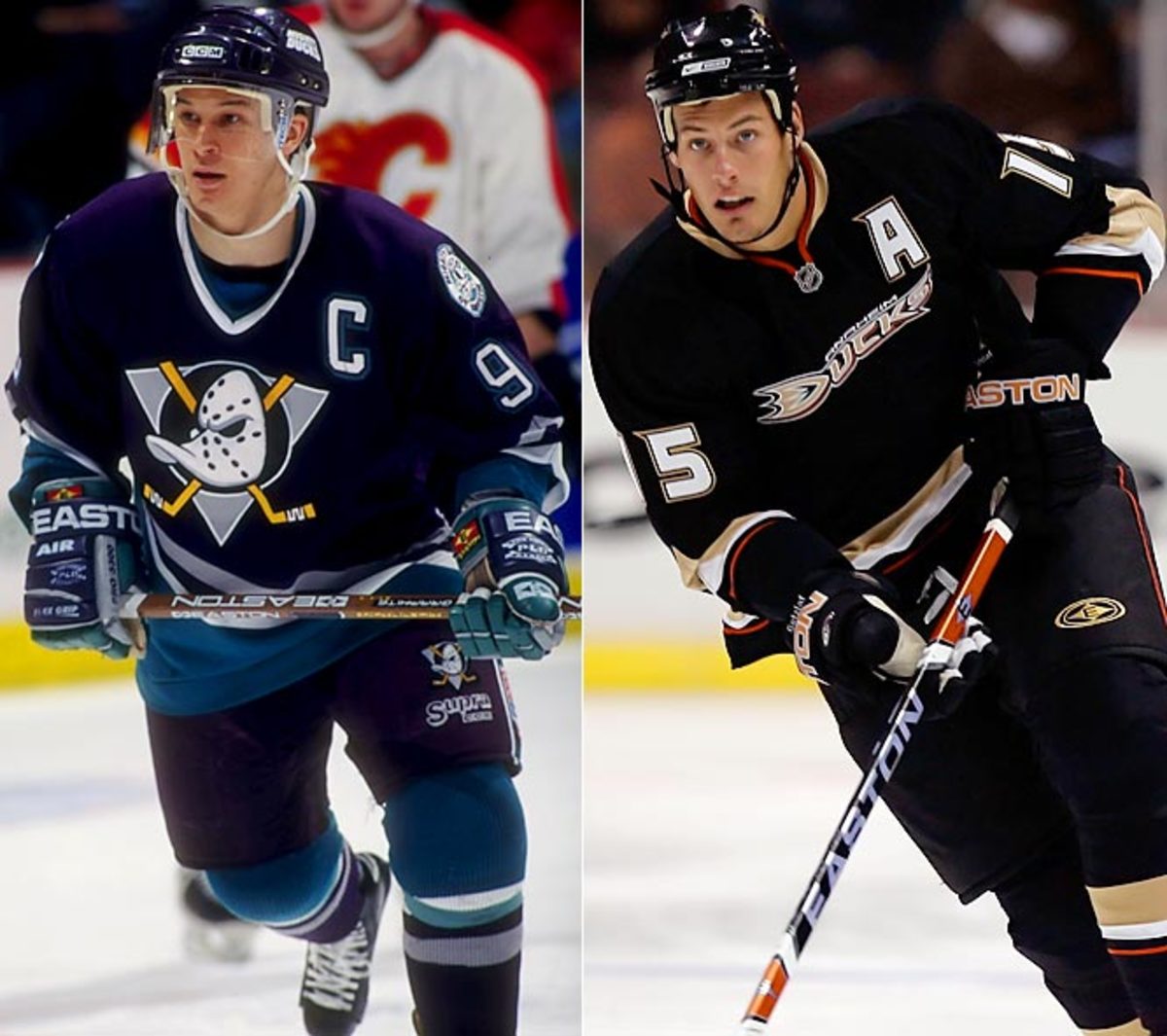
The original Mighty Ducks of Anaheim were bedecked in eggplant purple on the road, and their crest was little more than a billboard for owner Disney's movie franchise. Their latest, more dignified name and duds are befitting of a Stanley Cup champion.
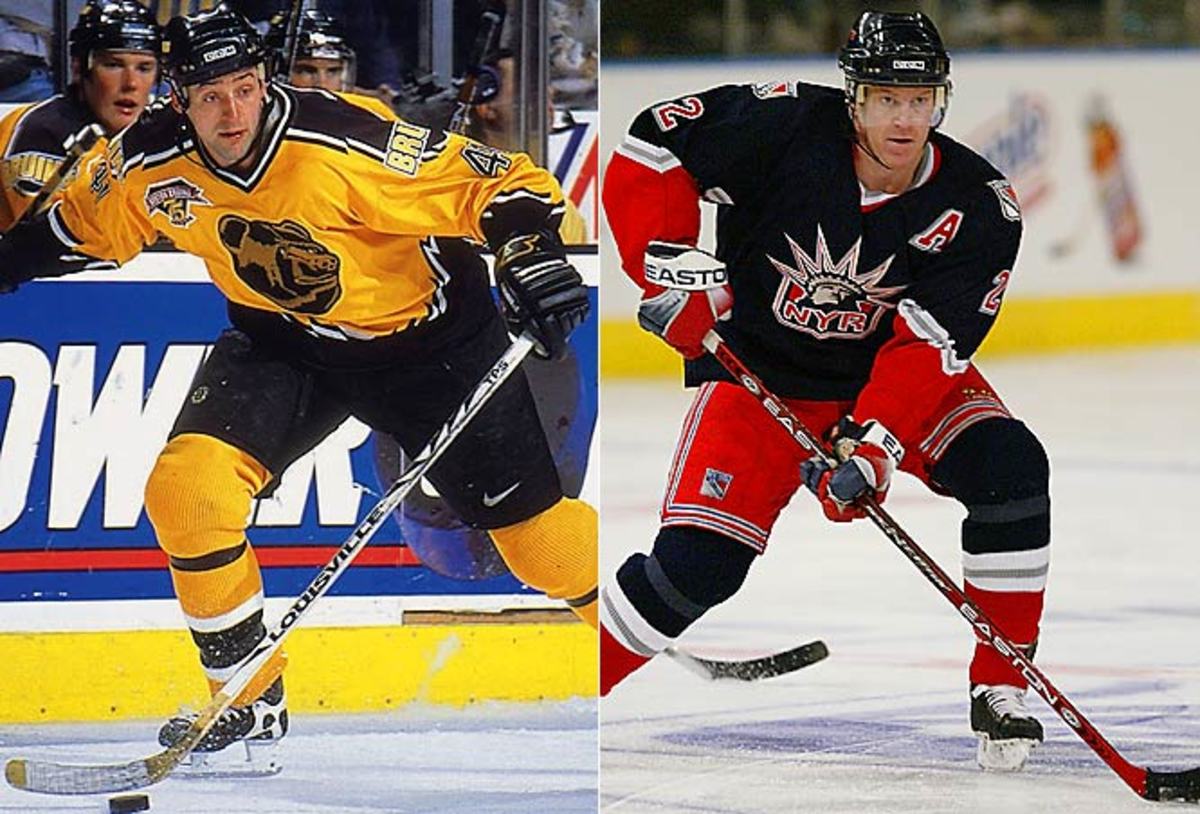
After the lockout-shortened season of 1994-95, many teams unveiled a third jersey with variations on their traditional colors and crest. The Boston Bruins donned a bear head that many deemed a boo-boo. The New York Rangers' adopted Lady Liberty.
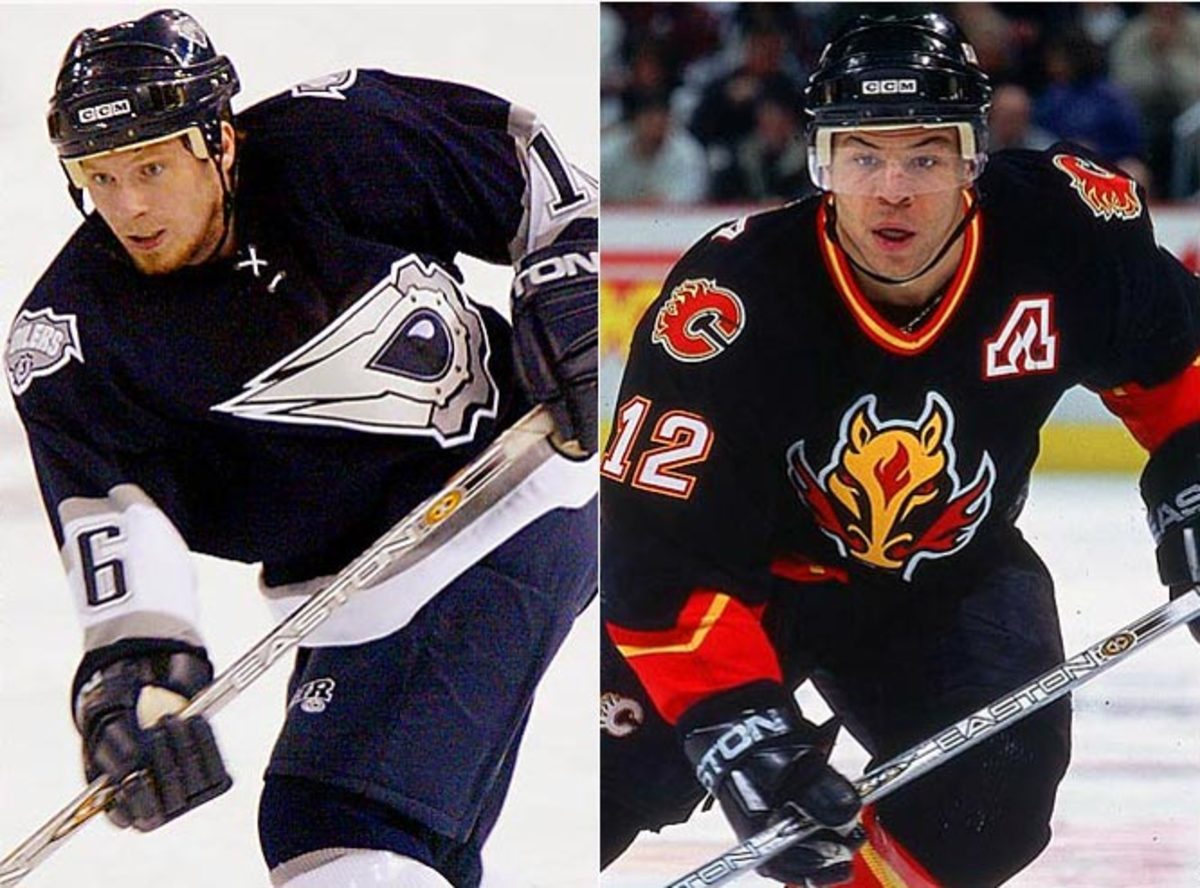
Third jerseys with alternate colors and crests survived into the 21st century, among them the Edmonton Oilers' black oil drop and the Calgary Flames' fiery steed.

The Buffalo Sabres have been on the cutting edge of fashion. Their late '90s look foreshadowed much of this season's NHL-wide wave. Buffalo's current scheme, introduced last season, bears a number on the right breast (numbers were worn on players' chests as long ago as the 1940s) and a crest that has been assailed for resembling a slug -- hardly symbolic of a team feared for its speed.

Along with their familiar colors, the Columbus Blue Jackets have a new crest. The Ottawa Senators' centurion is sharper and more menacing.

What's old is new again. After 11 years of blue, black, white and copper schemes and eagle and capitol building crests, the Washington Capitals have returned to their look of 1974-95.
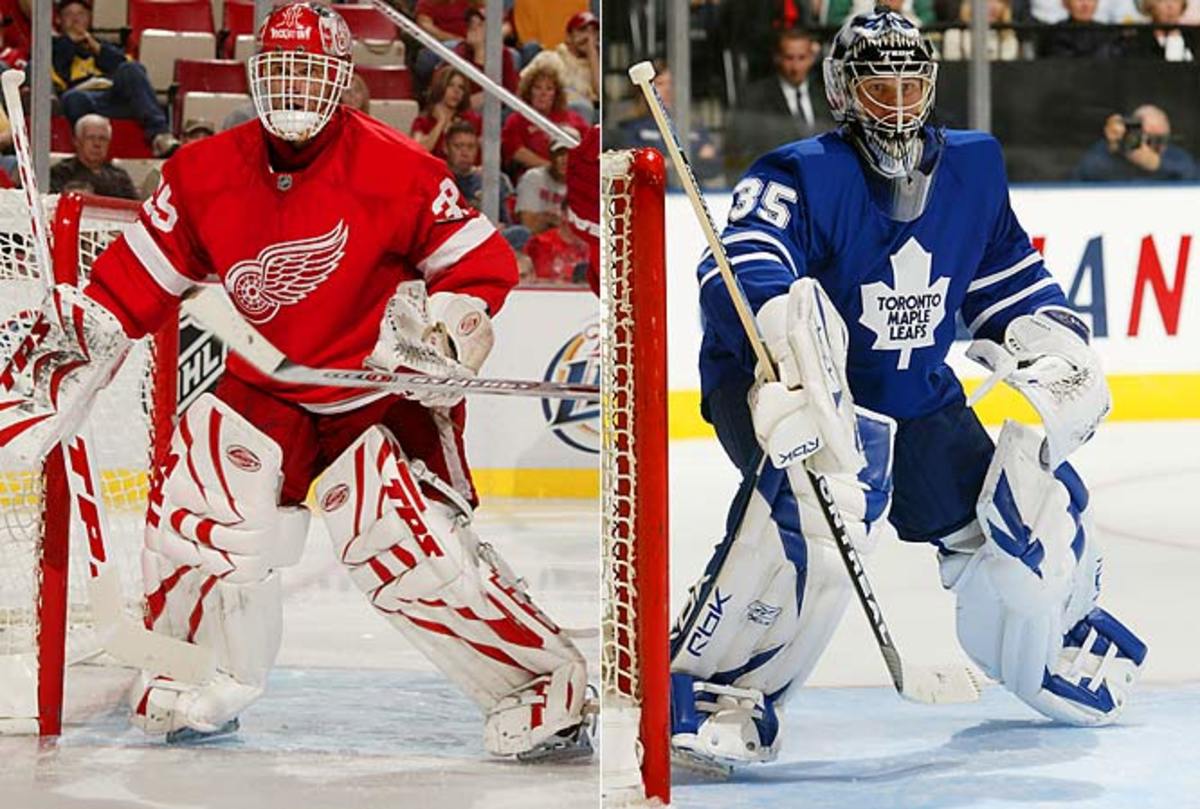
Some things never change. The Detroit Red Wings and Toronto Maple Leafs, two Original Six teams, have maintained their traditional looks.

Colorado's hockey history on display: Avalanche defenseman John-Michael Liles (second from left) wears the team's new uniform. Former defenseman Curtis Leschyshyn (third from left) is in their original jersey from 1995. Coach Joel Quenneville displays the sweater of Colorado's first NHL team: the Rockies, now the New Jersey Devils.
